For one or two posts a year, I have to touch on the idea of extra-terrestrial life, and this particular facet of the topic I’ve mentioned before, but I’m going into it a bit deeper this time. Given the extremely low likelihood of such an event coming to pass, this post counts as far more attention than is warranted, but if I only tackled relevant and important topics, I’d lose my blogger status and have to start getting paid for this…
We hear of more ‘exoplanets’ all the time, most of them courtesy of the Kepler Space Telescope, and with each of them comes the wild speculation in the media about whether such a planet might harbor, not just life, but intelligent life, and this distinction is worth making, because to the best of our knowledge, it’s a huge difference. In the history of this planet there have been millions of species, with just one among them that is ‘intelligent,’ and that one took a long time to develop – statistically, that spells an extremely thin chance of intelligence popping up. And while the media, and really, the general public, concentrates on this potential to the near-exclusion of all others, it’s not what planetary scientists and exobiologists and so on are thinking of most of the time; they’re thinking microbial life first and foremost, with the additional idea that a thriving ecosystem – something indicating a good possibility of complex life – will leave a signature in the atmosphere of any planet, which could potentially be seen from a long distance by the infinitesimal spectrum changes to the starlight that passes through such an atmosphere. So far, nothing compelling along those lines, but with the great distances involved, it’s hard to say if this means a damn thing.
And in fact, with just one example of life forming to go on, we have little more than guesswork anyway. Is our planet typical, or rare, or completely unique? Pick any one you like; they’re all just guesses anyway. A lot of people seem to have the idea that intelligence is inevitable, given the development of life, but that’s ignoring all of the numbers that say otherwise.
But for now, let’s proceed with the what-if scenario that it has occurred, and not only that, but close enough to actually have some form of contact with us – the odds are incredibly low, but humans are social and we can’t resist the thought of it happening. I’m compelled to believe that the best-case scenario is the one that’s most likely: that we are communicating over a great distance, probably requiring a lot of energy, and so our messages are meticulously crafted and vetted, likely very terse and dealing only with basic information.
Because, to nearly all indications, we stand a high likelihood of having very bad relations with another species. This is not about the human tendencies towards violence or petty behavior – those do exist, but it seems likely we’ll try to be on our best behavior in such circumstances – but about the very traits that define us as human in the first place, yet may be unique to our species. There are two things that could have enormous impact on our interactions: our tribalism, and our judgment on visual appearance. We’ll tackle the latter one first.
It’s pretty obvious that our standards of, for instance, ‘cute’ and ‘ugly’ are not just observations, but methods of judging the value of just about anything. Those working with endangered species know that the ‘cute’ animals will get nearly all of the funding and attention, while reptiles and fish will be nearly ignored – who cares about a fish? But pandas – they’re so cuddly! And that’s all that can be said; their impact on the ecosystem, their function as a balancing agent, the ripple effect if they disappear – all negligible at best. There is barely a reason to prevent their extinction except for “Awwwwwwwwwwwww!” I don’t want to minimize it, because any extinction is something to avoid solely from the potential impact, even if we’re not the direct cause in the first place. Yet there are a lot of species that will have much greater negative impacts on the entire system than pandas. Pandas, however, trigger a collection of emotional responses within us solely from their appearance. Many of their traits are like newborn humans, including the faux-wideyed look, while they’re plush and would make good cold-weather companions (or provide useful pelts – did I say that? Yet that’s likely the only reason why we like fuzzy things to begin with, having survived through a few different ice ages.) Pandas get our attention because the traits that we evolved aren’t specific enough to distinguish between useful behavior and pointless indulgence. Seriously, try and find a use for an oversized, lethargic creature that feeds almost entirely on bamboo – especially since we can’t stomach the thought of eating them, and virtually nothing else will either. Where the hell does this fall in the food chain?
Now imagine an endangered spider species, one that feeds on the larva of several pestilential insects that devour food crops and reproduce like mad. One that also serves as a food source for migratory birds on their paths across the continents, thus filling an important niche in the food chain. Plenty of reasons to keep them around, right? Yeah, so, good luck getting that funding going. It’s a spider, they’re icky! Like snakes, far too many people don’t care what the species is – by association, they’re all horrible and should be destroyed.
And if intelligent aliens have too many traits of a species we don’t approve of, our interactions are very likely to be colored by this, unless we’re extremely diligent about how we go about it. It’s easy to believe that we, as rational humans, wouldn’t be so stupid as to treat an intelligent species like it was an insect or something, but this is probably not an accurate assessment. First off, just consider the phrasing of, “We wouldn’t treat them as if they were insects,” because it’s an indirect admission that we do treat insects differently, and most times very poorly – we know the bias is already there! We’re automatically dismissive of arthropods, as if all of them are pests – far more so than we are of rodents. Yet, the number of species that can do us any harm, directly or indirectly, is tiny, while far more of them are beneficial. The rational mind isn’t at work here.
It could be a lot worse than that, however. As mentioned above, simply calling something “ugly” is not an observation, but a judgment of value; “Let’s not be ugly about this,” and, “It’s an ugly house, isn’t it?” aren’t ever taken as neutral statements – ugly is bad, to more than just shallow people. The gut reactions to beauty and lack thereof have been used for centuries in marketing, politics, and entertainment, and there are countless studies as to how attractive people gain benefits from their interactions with others. This is not surprising from a simple biological standpoint; our standards of beauty and ugliness largely revolve around things indicating health, and are responsible for helping us decide everything from what fruit looks best to what spousal choice is most likely to produce offspring that will thrive. The problem is, it doesn’t shut off when it comes to subjects where the physical appearance has no impact on us, and most times, we’re not even aware that we have this bias coloring our decisions and reactions. Even minor changes in average appearance is enough to make us pause at least; witness the number of people who find dolls with slightly incorrect features to be ‘creepy,’ and the discomfort with strabismus, as common as it is. Anyone with congenital birth defects or significant scarring will tell you how badly some people handle such simple and immediately recognizable differences in appearance.
Note that this aspect has never been lost on the artists and designers responsible for the depictions of intelligent aliens in our media. HG Wells and HP Lovecraft both provided marauding alien species that had tentacles, and most artists provide their aggressive ETs with glaring eyes, as if this would be a universal trait. Countless authors have imagined arthropod-like intelligence; Alan Dean Foster at least, among perhaps many others, tackled this very kneejerk phobia with the first encounter of the insectoid Thranx species in Nor Crystal Tears. For the vast majority of cases, just take a look at how the life form is depicted to determine if it’s supposed to be hostile or not; there’s a constant reinforcement that if it looks nasty, mean, or creepy, that’s an accurate assessment (which, at least as far as Hollywood is concerned, isn’t limited to extra-terrestrials either.) Science fiction authors aren’t quite as predictable; many of them, at least, subvert the expectations that have been bred into us.
[For fun, examine the above paragraph and note the various terms used to refer to such life, weighing the relative appeal of, “extra-terrestrial,” against, “alien,” even when they mean the exact same thing in these circumstances.]
That’s only half of it – we still haven’t tackled tribalism. Because as a species, we’re particularly adept at drawing lines between us and them, from school cliques to jingoistic nationalism, the ‘good’ and ‘bad’ neighbors to those people that eat weird food. If we can create a bin that forms a distinction, we will – and it’s safe to say that any intelligent life from another world will instantly get into the other bin. Even if a species demonstrates no form of class consciousness at all, no bias or bigotry, not even any nationalism or sports rivalry, we’ll be able to look down on them because of this – it just ain’t right, you know? While exercising a healthy caution in any dealings is arguably prudent, due to the very fact that we can’t understand exactly what motivates another species (including those on this planet,) can we even make the distinction between which of our reactions is ‘protective’ and which is ‘insular?’ If we get a request of, “Let’s trade technology,” what are we going to send them? I can bet there’s a few items that hit the “Absolutely Not” list immediately.
Again, some perspective, because we often think that another intelligent species is something that we will accept readily, because we believe “intelligent” means, “like us.” While that sinks in, I’ll point out that everybody on this planet is “intelligent” and “like us,” and we can find every excuse in the book not to eradicate world hunger or even welcome immigrants. The vast majority of internet forums will devolve into pointless sniping over stereotypes every time nationality comes up even casually, and let’s not even talk about something as insipid as political parties. It’s impossible to imagine any way that an extra-terrestrial species will not be viewed with rampant xenophobia. And in such a case, it’s hard to say just how badly our relations with them may progress, or how these tendencies might influence us towards a negative or even hostile response.
This seems to be an evolved trait as well. Both Richard Dawkins and Steven Pinker have written at length about the tendencies for humans to favor their own kin; the closer the relation, the stronger the favor. Again, this makes perfect sense from a genetic standpoint, because all species evolved to propagate their genes, and closer relations bear greater percentages of the same genes, so as behavioral traits sprung up to promote close kin, they strengthened through natural selection, and we actually demonstrate multiple ways in which we differentiate kin from ‘stranger,’ from appearance to body odor and even speech patterns. There is no way to prove this is how such traits developed, but the multiple converging lines of evidence gives the theory a lot of support, and the bare fact that we have these traits isn’t in question.
Dawkins and Pinker both stopped just short of voicing the inevitable conclusion, which is that racism (and indeed, every other form of tribalism and ‘they’ism) has evolved into us. They likely avoided it with good reason, because people can be notoriously bad about jumping to conclusions and failing to understand the difference between “is” and “ought” and all that. Nothing that any species evolves is “right,” or how something “should be” – it just reflects the properties that served to propagate the genes. Even considering that we are a successful species because we made it this far while being so tribalistic ignores the basic fact that species go extinct all the time. It works… up until it doesn’t.
But just assuming that it is presently working doesn’t mean much either, because the advantage that it infers only applies to seeing that individuals with a high likelihood of our own genes receive the benefit over others, and that only applies in circumstances where the competition for scarce resources is crucial – something that exists in minuscule portions of today’s world, and only insofar as reproduction goes. Everything else, all other forms of tribalism, are nonsense – again, like finding pandas cute, we simply haven’t evolved the instincts to distinguish readily. Even worse, there’s a distinct limit to how useful the trait is even in such rigidly-defined circumstances, because genetic diversity remains the key to resisting both “inbred” genetic mutations and viruses that evolve around our defenses. We have to avoid total insularity to survive as a species.
And there’s one other thing that we evolved, which takes the place of perhaps several thousand different instincts, emotions, and automatic responses: rational thought. We have the ability to weigh decisions rather than respond the same way for any given criteria. We have the ability to say to ourselves, “But does this make sense?” rather than act without any thought whatsoever. That’s what defines us, and even defines “intelligence” to our own satisfaction. Sadly, we just have a really hard time doing it, far too often, and even believe that if we feel strongly about something, that’s as good as a rational decision even when rationality played no part whatsoever. Some of it even comes down to perceived threat level: if we feel danger is imminent, we tend to stick to the instinctual, reactive responses rather than calm deliberation. So some of the question is, what’s going to trigger feelings of imminent danger?
There is a potential saving grace in all of this, and that’s the high likelihood that an extra-terrestrial species could not even recognize when we’re being anti-social, since they will have their own evolved standards of social conduct. Even what we would consider inexpressibly rude behavior might slide past unnoticed. But at the same time, anything that we do might be considered by them to be inexpressibly rude; we can only hope that they’re far more objective and comprehending than we are. Though if they’re too far in that direction, we’re liable to feel threatened by that. And naturally, how many different things could they do that would cause us to take offense without realizing that they have no concept of what would offend us? Just trying to imagine the permutations of all this is confusing.
Many years back, Berke Breathed imagined the other side of the coin in his comic strip Bloom County:

… which could also provoke some inappropriate reactions.
[Don’t accept the date at that link as the original – this strip first ran in 1987 soon after the Oliver North hearings, as the followup strip satirizes.]
I don’t know if you get the same impression that I do, but I suspect we might do a lot better at some point in the distant future, when we have evolved a better distinction of how and when such reactions take place – if, of course, we really do evolve in such a direction. Since it’s dictated by environmental pressures, it’s not clear if we can reasonably expect this.
All of this would come after we figured out how to establish communications in the first place, which could be an immensely formidable task, one that might take decades or even prove to be insurmountable. And that’s all only if we find intelligent life within a very narrow set of statistical conditions. Not something to be worrying about, really.





















































 Taken just a few days back, this is another current one for Monday color. Despite having a couple of overnight frosts, and the bare fact that the tomato plants never did well this year because of the sporadic sunlight in the back yard, one of the cherry tomato plants is still valiantly, defiantly producing fruit (and yes, tomatoes are a fruit.)
Taken just a few days back, this is another current one for Monday color. Despite having a couple of overnight frosts, and the bare fact that the tomato plants never did well this year because of the sporadic sunlight in the back yard, one of the cherry tomato plants is still valiantly, defiantly producing fruit (and yes, tomatoes are a fruit.)
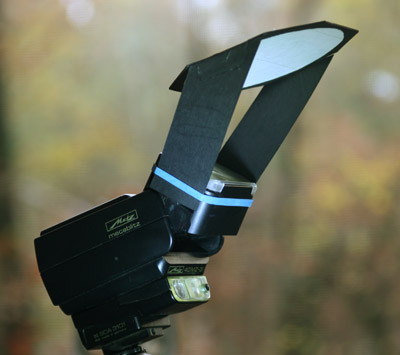 So the other day, I tried out another homemade option. To make lighting less harsh, it needs to be spread out and diffused a bit, preferably coming from a broader area rather than the small point source of the flash tube or the scatter panel right in front of it. This can be done by a) bouncing it off of a wider reflective panel, like an umbrella or a ceiling; b) sending it through diffusing material like thin white cloth or tissue paper; or c) both. Because I was doing macro work in close quarters, especially in ‘the field’ where the flash unit usually has to move with the camera, the distance for bouncing is limited; it would also be nice if the rig could pack into a camera bag easily. So this is the current experiment, a very simple deal. Two arms hold the bounce panel a short distance from the head, at an angle that accommodates macro work.
So the other day, I tried out another homemade option. To make lighting less harsh, it needs to be spread out and diffused a bit, preferably coming from a broader area rather than the small point source of the flash tube or the scatter panel right in front of it. This can be done by a) bouncing it off of a wider reflective panel, like an umbrella or a ceiling; b) sending it through diffusing material like thin white cloth or tissue paper; or c) both. Because I was doing macro work in close quarters, especially in ‘the field’ where the flash unit usually has to move with the camera, the distance for bouncing is limited; it would also be nice if the rig could pack into a camera bag easily. So this is the current experiment, a very simple deal. Two arms hold the bounce panel a short distance from the head, at an angle that accommodates macro work.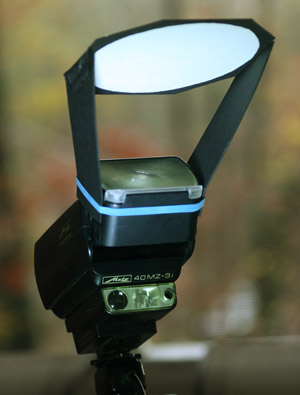 It’s all constructed out of mat material, the same stuff used in picture frames, basically stiff paperboard – I had some black stuff with dingy ‘core’ color instead of bright white, which made it unusable, really (always buy bright white core stuff.) The reverse surface is matte white, which I made brighter and more reflective by putting clear packing tape over it in a circle, then painting the surrounding bits black – the circle measures 11cm across. While I could easily put some hook-n-loop patches on it to hold it in place, right now I’m just using a rubber band, which is more than adequate for the negligible weight. And the arms are attached with fabric ‘hinges’ so they’ll fold flat when not in use.
It’s all constructed out of mat material, the same stuff used in picture frames, basically stiff paperboard – I had some black stuff with dingy ‘core’ color instead of bright white, which made it unusable, really (always buy bright white core stuff.) The reverse surface is matte white, which I made brighter and more reflective by putting clear packing tape over it in a circle, then painting the surrounding bits black – the circle measures 11cm across. While I could easily put some hook-n-loop patches on it to hold it in place, right now I’m just using a rubber band, which is more than adequate for the negligible weight. And the arms are attached with fabric ‘hinges’ so they’ll fold flat when not in use.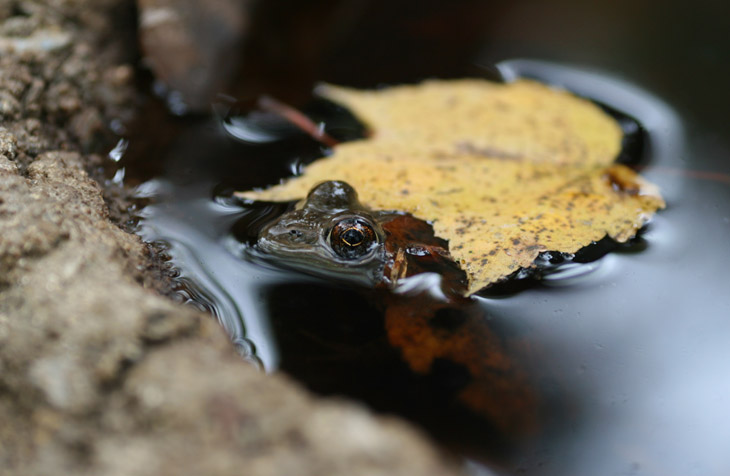
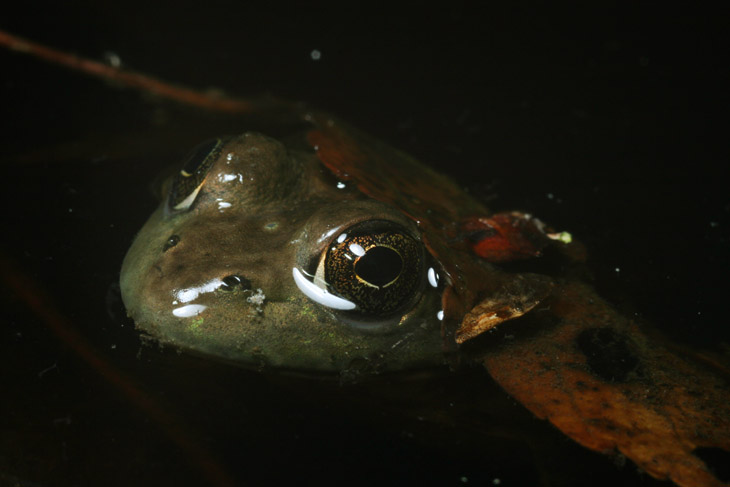
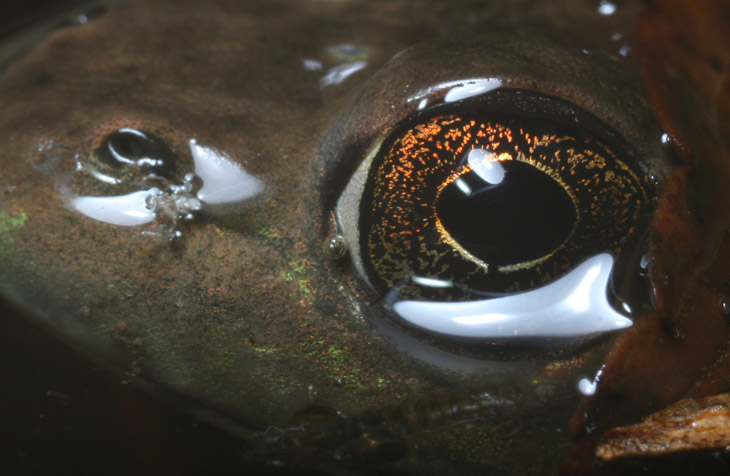
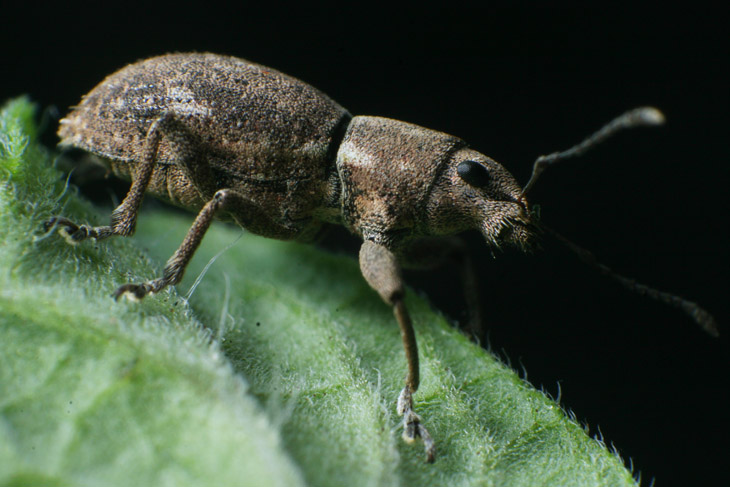
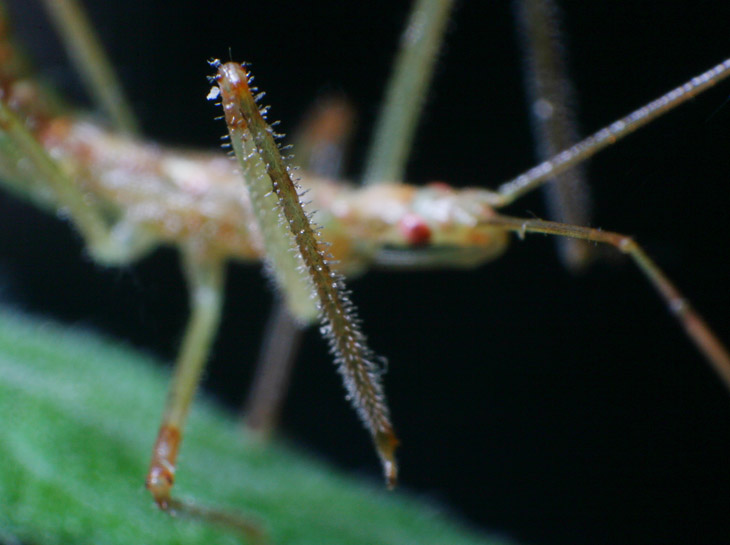
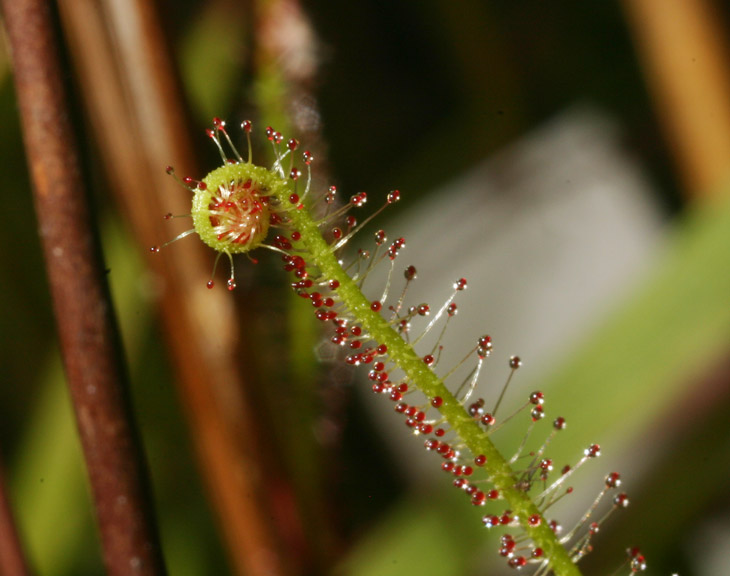
 A closer look at the insect’s leg is seen at right – this is one that I captured and kept in the
A closer look at the insect’s leg is seen at right – this is one that I captured and kept in the 
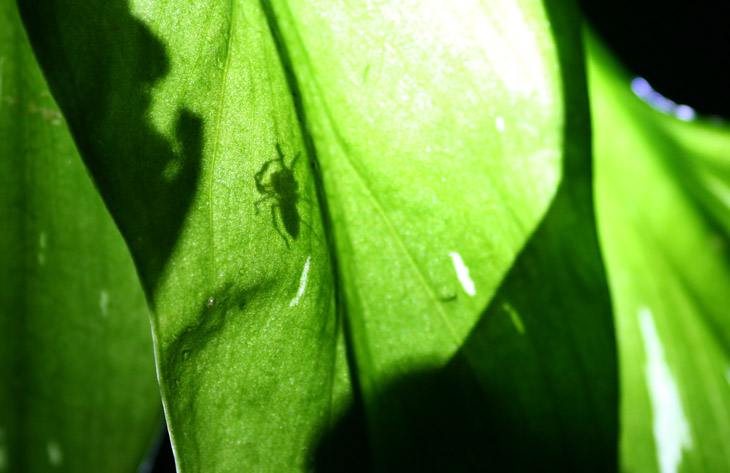
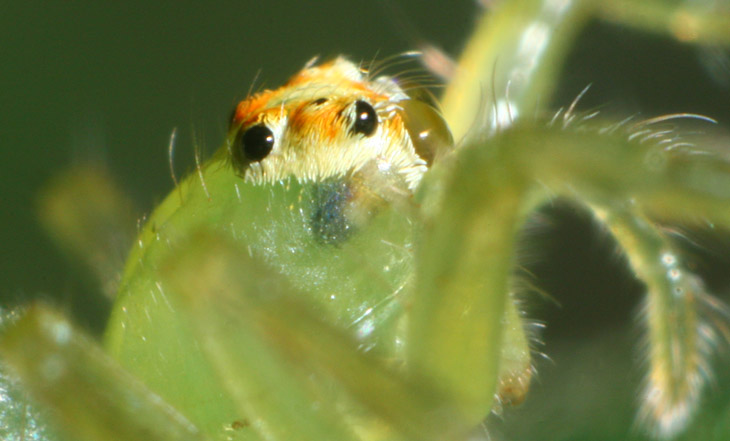
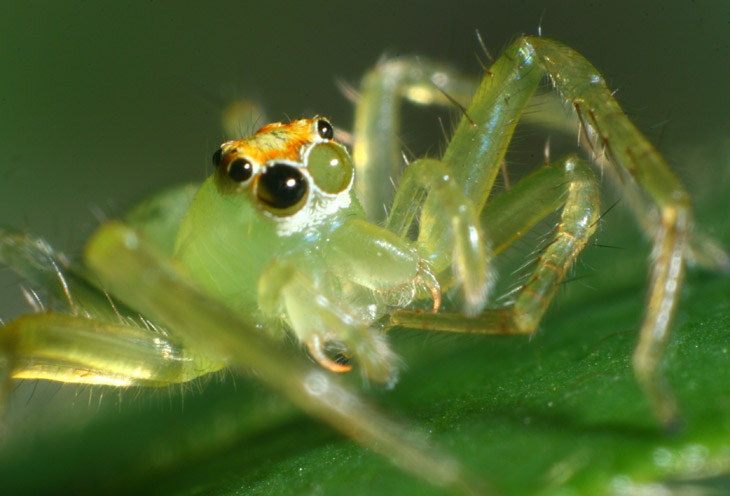
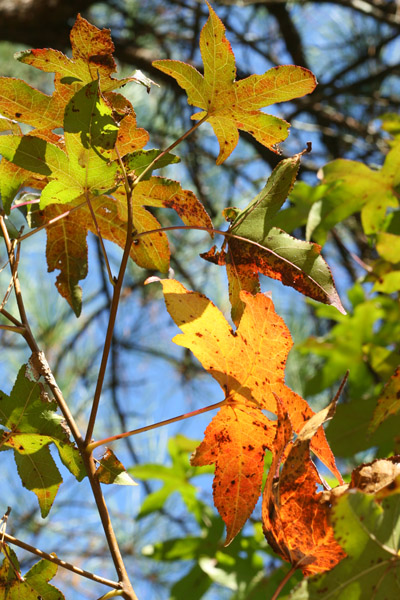 Today, a recent one, taken a few days back with the
Today, a recent one, taken a few days back with the 
 The radiant is where each of the storms get their names. It is the part of the sky that is facing into the debris that causes a meteor, so the majority will appear to be emanating from that point – in this case, that’s the constellation Leo. One of those bright fireballs, however, appeared close to the horizon and traveled parallel to it, more or less towards the radiant. What’s happening is that meteor storms are bits of junk left in the orbital path of comets, some of the stuff that produces the visible tail as they approach the sun, and each year the Earth encounters this halo of stuff on its own orbit of the sun. The radiant is the point that faces into the wind, as it were, straight off the nose of the Earth – the planet rotates, and with it the sky, but it’s traveling in one particular direction, and in November that’s towards Leo. But as Earth enters this cloud of meteoroids, they may have their own inherent travel directions, not to mention being redirected by the gravitational pull of the planet, so while most of the meteors we might see originate from one direction, they can come from just about anywhere.
The radiant is where each of the storms get their names. It is the part of the sky that is facing into the debris that causes a meteor, so the majority will appear to be emanating from that point – in this case, that’s the constellation Leo. One of those bright fireballs, however, appeared close to the horizon and traveled parallel to it, more or less towards the radiant. What’s happening is that meteor storms are bits of junk left in the orbital path of comets, some of the stuff that produces the visible tail as they approach the sun, and each year the Earth encounters this halo of stuff on its own orbit of the sun. The radiant is the point that faces into the wind, as it were, straight off the nose of the Earth – the planet rotates, and with it the sky, but it’s traveling in one particular direction, and in November that’s towards Leo. But as Earth enters this cloud of meteoroids, they may have their own inherent travel directions, not to mention being redirected by the gravitational pull of the planet, so while most of the meteors we might see originate from one direction, they can come from just about anywhere.
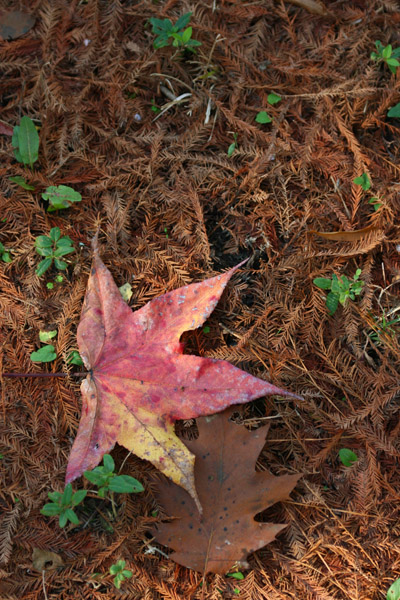 When the weather wasn’t bad, I was tied up, and when I had free time, the weather was terrible. Plus, the terrible weather was enough to take the leaves from the trees in most places. Thus, the autumn color season danced away from me this year, but I think it avoided a lot of people, so I’m not going to feel too badly about it.
When the weather wasn’t bad, I was tied up, and when I had free time, the weather was terrible. Plus, the terrible weather was enough to take the leaves from the trees in most places. Thus, the autumn color season danced away from me this year, but I think it avoided a lot of people, so I’m not going to feel too badly about it.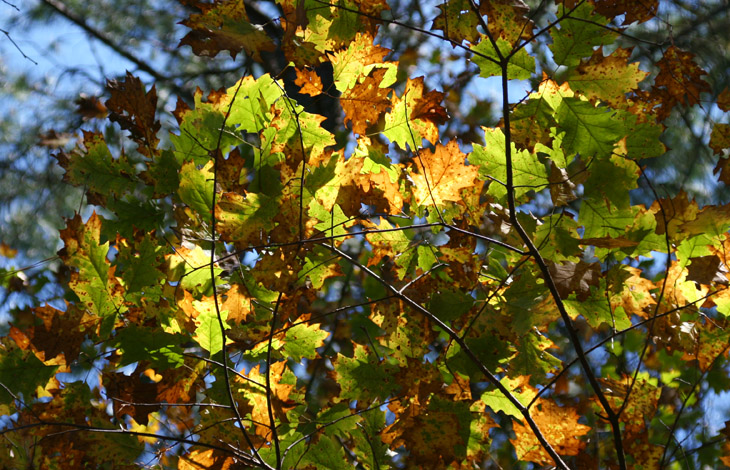
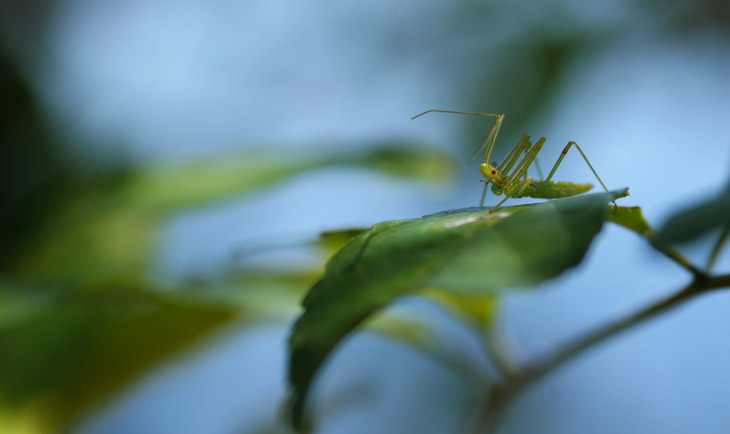
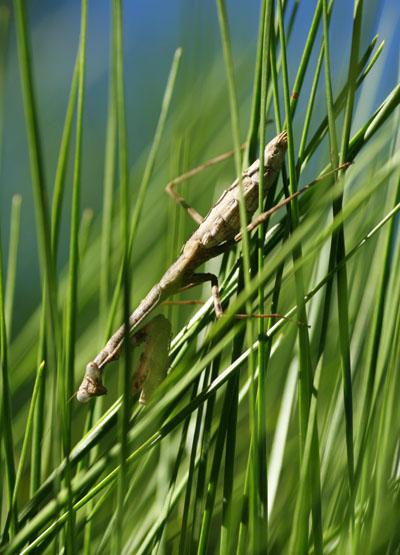 The family of mantids that I observed in the yard all spring and summer seem to have vanished, but a few of the Carolina mantids (Stagmomantis carolina) are hanging out at the nearby pond. Both were sluggish on my first encounter, since they hadn’t a chance to warm themselves much yet, but they soon became as active as normal. Unfortunately, the wind also started to pick up, swinging the branches about wildly, and focus on the smaller insects (about as long as my thumb) became impossible.
The family of mantids that I observed in the yard all spring and summer seem to have vanished, but a few of the Carolina mantids (Stagmomantis carolina) are hanging out at the nearby pond. Both were sluggish on my first encounter, since they hadn’t a chance to warm themselves much yet, but they soon became as active as normal. Unfortunately, the wind also started to pick up, swinging the branches about wildly, and focus on the smaller insects (about as long as my thumb) became impossible.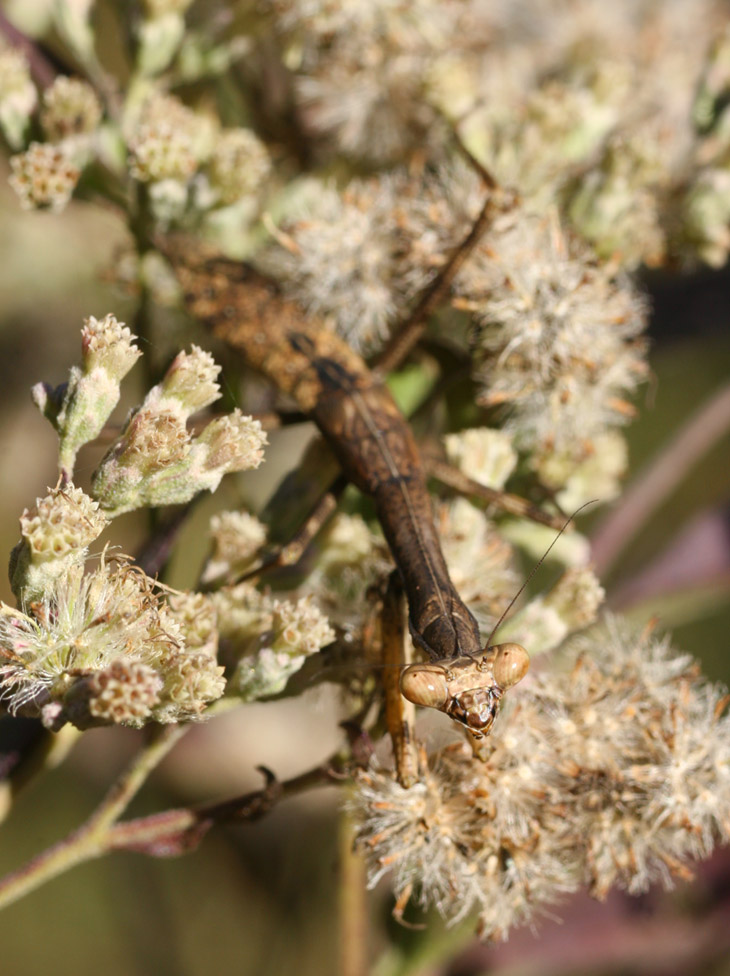
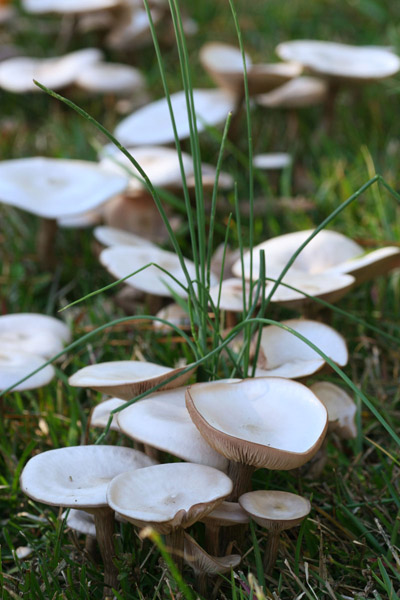 Rains, naturally, bring out the mushrooms. These are part of the first “fairy ring” I’ve ever seen, a nearly-complete circle of mushrooms. But they occurred in mixed lighting and the contrast prevented any decent images of the entire ring, so I went in close for a few dancing with the wild onions that are common in the area, which make the task of mowing the lawn a notably fragrant experience.
Rains, naturally, bring out the mushrooms. These are part of the first “fairy ring” I’ve ever seen, a nearly-complete circle of mushrooms. But they occurred in mixed lighting and the contrast prevented any decent images of the entire ring, so I went in close for a few dancing with the wild onions that are common in the area, which make the task of mowing the lawn a notably fragrant experience.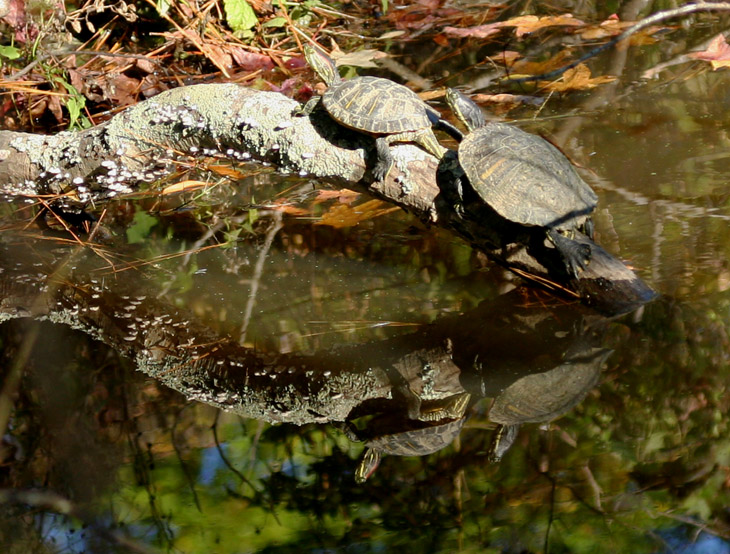

 And to close, another of the pale green assassins, because I liked how all the elements fitted together, plus it’s a decent scale shot. Often enough, this is exactly how many subjects first appear, and to spot them one has to be able to see the change in pattern, the unexpected element that signifies something other than the normal botany; for the Carolina mantis on the white flowers above, the only thing I spotted initially was a leg, out of place because no twigs or leaf stems should have been present among the flower blossoms. It’s a good trait to develop, but don’t ask me how to do it or how long it takes – I just realized that I’ve been doing it for a while now. Nor can I even say how good I am at it, because there’s no one going along behind me to tally all the critters that I miss ;-)
And to close, another of the pale green assassins, because I liked how all the elements fitted together, plus it’s a decent scale shot. Often enough, this is exactly how many subjects first appear, and to spot them one has to be able to see the change in pattern, the unexpected element that signifies something other than the normal botany; for the Carolina mantis on the white flowers above, the only thing I spotted initially was a leg, out of place because no twigs or leaf stems should have been present among the flower blossoms. It’s a good trait to develop, but don’t ask me how to do it or how long it takes – I just realized that I’ve been doing it for a while now. Nor can I even say how good I am at it, because there’s no one going along behind me to tally all the critters that I miss ;-)